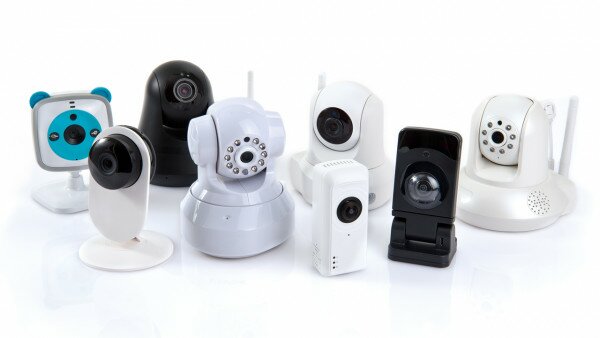Using a home surveillance camera has become more prevalent in recent years, as many consumers use the devices for checking on elderly family members or children at home, making sure they are safe, and some use them for security reasons. The Consumer Council cautions users that if they overlook online safety, such as using the factory default login password provided by the manufacturer, the home surveillance camera may be vulnerable to being hacked. These consumers even risk having their real-time home video footage broadcast online. The Council collected information on home surveillance cameras available in the market, and found that besides the easy set up, most of them provide relatively reliable and fast direct connection via IP addresses, but users should be internet-savvy if they want to set up the camera themselves.
The information on 40 home surveillance cameras studied by the Council came from 12 different brands in the market with prices ranged between $228 and $1,550. For connectivity, families opting for this kind of camera usually choose products that are easy to set up. The 40 models allow cloud account or P2P (Peer-to-Peer) connection, without the need to have professional network knowledge and to change the router settings, and they only require a few minutes of set up. Some models even provide a QR code to make the set up easier.
Users should note that although cameras using cloud account or P2P connectivity are easier to set up, the cameras are required to connect to the server of the manufacturer every time the user logs in through a mobile phone or computer. This not only affects connecting speed, if the server is situated in a region or country where privacy protection is inadequate, users also may have higher risk of having their names and passwords stored in the server stolen.
Apart from the easy set up as mentioned above, 33 models provide a more reliable IP address for direct connectivity. However, since most household broadband services do not have static IPs, users have to rely on DDNS (Dynamic Domain Name System) to connect, and set up port forwarding, if they use a router. Users without relevant knowledge may need to pay to get help with installation on site.
Users choosing to use IP address or DDNS connectivity don't have to rely on the connection service provided by the manufacturer. They can make use of third-party applications to monitor situations at home in real-time through the security camera.
Speaking of functions, all models being studied provide images in HD (high definition) resolution or higher and adopt file compression ratio technology that is relatively advanced. This function enables users to view real-time HD images smoothly when using a mobile phone to view online.
As for the field of view of lenses, 9 models offer a perspective of 100 degrees or higher, while 2 provided views reaching 180 degrees. It is noteworthy for users that the ultra-wide angle lenses may distort images. Consumers may prefer to choose among the 27 models that offer motorised pan-and-tilt functions. Among those, 13 are capable of panning left and right up to 350 to 355 degrees, while 15 are able to tilt upward and downward 120 degrees. These movable cameras are generally larger sized and come at a higher price.
Consumers needing a surveillance camera for monitoring in the evening should choose one with infrared (IR) night vision lighting function, 37 of the 40 models have this function.
Besides providing real-time images, 34 models with built-in memory card slots can perform a recording without the necessity of connecting to a computer. Duration of playback depends on available capacity of the memory card. Older footage will automatically be deleted to free up memory for continuous recording.
Consumers should be aware that cameras bought online from overseas, may come with product specification not applicable to Hong Kong. This may contribute to longer connecting time through cloud account/P2P. Some products impose region restrictions, rendering them unusable in Hong Kong. Choosing a more popular brand or model makes it easier to obtain technical support or to find sharing of the experiences of other users, posted on the internet.
Moreover, the Council reminds consumers who are having surveillance cameras at home that, privacy of one's own and family members are undoubtedly important, but privacy of domestic helper, visiting relatives or friends, and personnel providing door-to-door services, also needs to be respected. Take the monitoring area and scope into consideration when setting up a camera and inform others they are being monitored by recordings. Also handle the recording footage properly.
Consumers using a home surveillance camera should pay attention to the following to protect privacy:
- Choose reputable brands. As many surveillance cameras are automatically linked to the manufacturer's server, if the manufacturer is unable to provide sufficient security to the users' personal data, the users' privacy will be at risk;
- Never use the factory default camera login password. Set a new and strong password containing a combination of letters, numbers and even symbols, comprised of no less than 8 characters. It's also important to change the password regularly;
- If the surveillance camera is installed and set up by someone providing door-to-door service, change the password immediately after the set up;
- Use only your personal mobile phone and computer to access to the security camera, never use a public device to log in, as a safeguard against having the password stolen;
- As product manufacturers update their firmware to improve product functions and tackle vulnerabilities, users should check and update firmware to make their products safer to use.
The Consumer Council reserves all its right (including copyright) in respect of CHOICE magazine and Online CHOICE.




